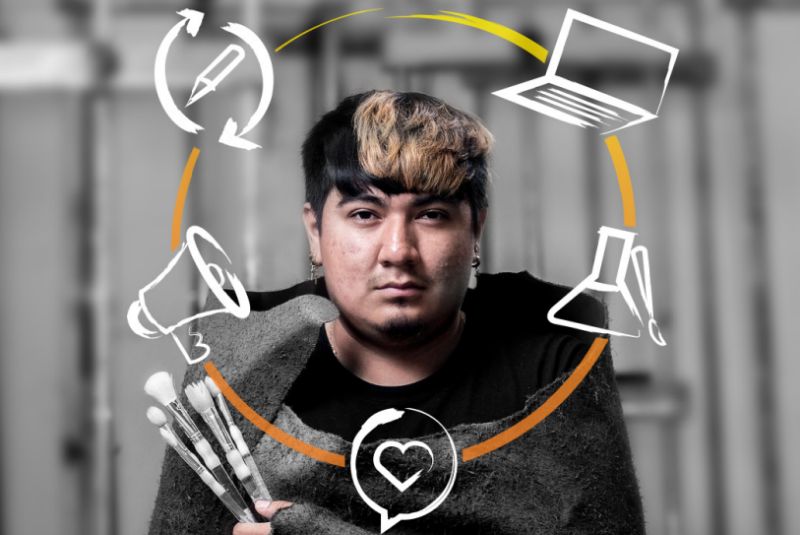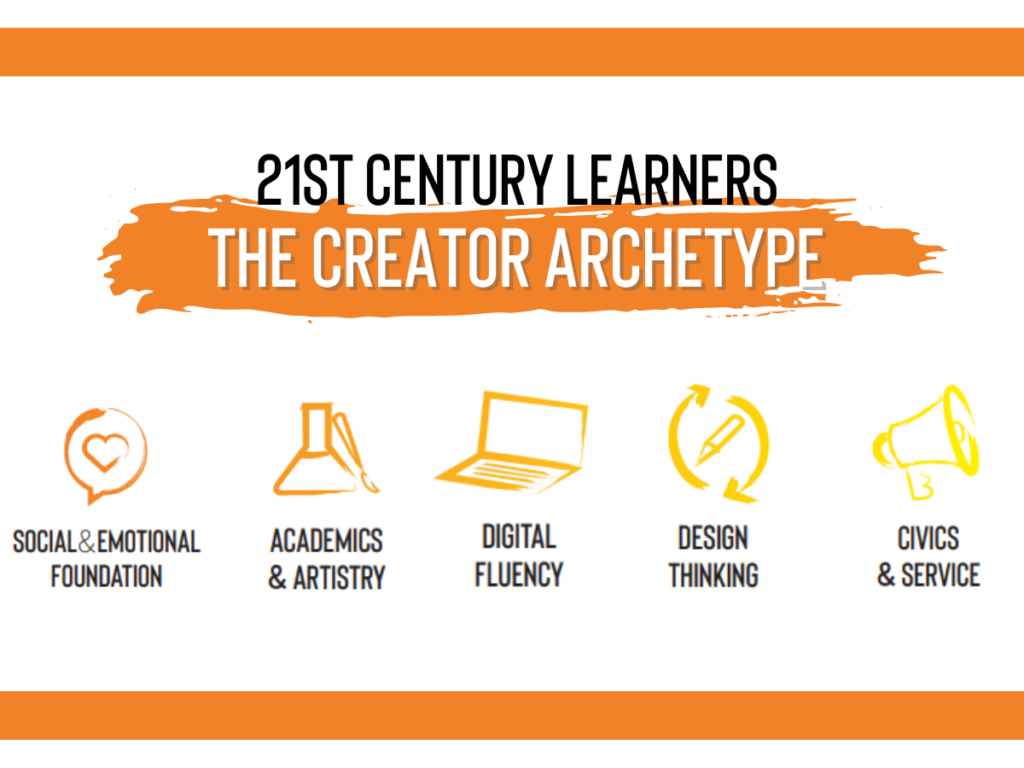Create Great: Mapping the Road to Youth Success
 We’re in the thick of the 21st century – the “digital age.” Careers in fields like blockchain development or user experience design sound futuristic, but they’ve already arrived. The future is now, and our youth possess the drive and power to find their place and thrive. How do we equip them with the tools they need to leverage their innate greatness? How do we make sure they’re ready for every opportunity that is presented to them?
We’re in the thick of the 21st century – the “digital age.” Careers in fields like blockchain development or user experience design sound futuristic, but they’ve already arrived. The future is now, and our youth possess the drive and power to find their place and thrive. How do we equip them with the tools they need to leverage their innate greatness? How do we make sure they’re ready for every opportunity that is presented to them?
We get creative.
Creativity is in Big Thought’s DNA
Creativity has always been deeply woven into Big Thought’s core, even in our earliest days as Young Audiences of North Texas, when the focus was on arts education. Creativity is and will always remain part of our foundation.
As Big Thought grew, so did our understanding of creativity. We started to see it as a skill that permeates more than just the arts. Workforce data has reiterated this for the past few years, with creativity being increasingly recognized as crucial for career success.
Our in-house experts examined what it means to learn creativity. We leaned into the idea that “building creative muscle” through creative learning experiences can produce lifelong learners who have the skillset, agency and agility to be ready for whatever their future entails.
Greg MacPherson, Chief Big Thought Institute Officer, is one of those in-house experts. “Creativity is learned in any number of spaces. It shows up for those working in tech and coding. Engineers are being creative when they are solving for problems. The creative process and the scientific process are not all that dissimilar – at the end of the day, it’s a process of exploration, trial and error, and problem-solving iteration,” MacPherson explains. “The skills within creativity really can position and prepare you for that future, whatever it is.”
This future-readiness became a priority. We knew it had a distinct connection with creativity, but we needed a way to articulate what we meant by creativity more explicitly. We needed to define those skills that youth develop in creative learning settings, the skills that equip them to create their best lives.
Building a framework for a creative future

With intention, Big Thought started building and designing, and the result was the Creator Archetype™ – a framework to identify critical learning experiences that support skills imperative to youth success. It also serves as a guide for Big Thought to measure and analyze our programs, initiatives and systems, and to ensure that the learning experiences we design, facilitate and provide to youth line up with the skills we know they need for today and tomorrow.
Those learning experiences are game changers. They’re how youth develop skills, identify passions and build career paths. Youth everywhere need these skill-building experiences, but access to them is not fair game – low-income youth have less access to high-quality opportunities than their more affluent peers, and some of the areas youth live in are experience deserts. When we have a framework for the skills they need, we can work to strategically provide experiences that youth are missing.
Laying a foundation for all of life
Experiences that build creative muscle have benefits for the long haul. Cross-cutting skills translate into career agility. Youth in our communities need the skills to not only get their first job, but to get subsequent jobs, to obtain a leadership role in a company or to transition to a new career or industry.
“If you have skills that are cross-cutting, your unique mix, that is going to better equip you to be able to navigate times of uncertainty, to have a clearer picture of what it is you want and how you’re going to go and get it, and how to persist when that pursuit doesn’t come easy,” MacPherson says.
It’s not just technical skills, though. Youth also need social skills and emotional intelligence, competencies that have become essential in the workplace and beneficial for all aspects of life.
MacPherson explains, “A lot of corporations are now saying ‘When we’re hiring, we know we can teach technical skills, so we’re looking most for people who have social-emotional skills – people that can be part of a team, work well with others, who are self-aware, can build a relationship, and make responsible decisions. For us as a company, if they come in with technical skills and can’t do the others, they won’t be successful in our culture or environment.’”
It’s why we call this component of the Creator Archetype™ “social and emotional foundations.” They’re the bedrock that other skills are built on, and they too can be taught, learned and developed.
Giving language to greatness
In this effort toward skill development, how can we measure and give evidence to the fact that these youth are prepared for the future?
A system like Learning Pathways can provide evidence of developed skills. The ability to prove and speak to these skills empowers youth to design and own their future.
“As soon as you tell students ‘this is a skill that’s valuable’ and you give them a digital badge, you’re empowering them further to actually leverage that skill, both in how they communicate it and in how they apply it,” says MacPherson, “That’s the big goal.”
Youth success, readiness for the future and skill-building – these ideas don’t have to be mysterious. With the Creator Archetype™, we have a framework and a language. We can use it to map a road of skills that lead to youth empowerment, agency and success, and we can work to make that road accessible to all youth.
To learn more about the Creator Archetype™, see What Makes a Great Creator? and The Creator Archetype™.